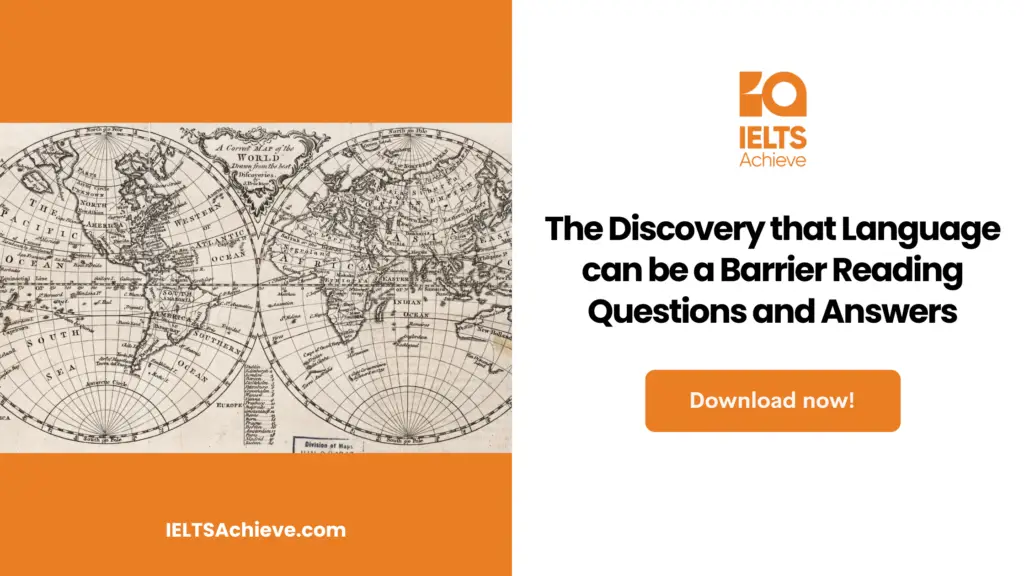The Blog post contains the following IELTS Reading Questions:
- IELTS Reading Sentence Completion
- IELTS Reading Table Completion
- IELTS Reading Short Answer Question
Stay informed and prepared for success – Explore our comprehensive Reading Test Info page to get valuable insights, exam format details, and expert tips for mastering the IELTS Reading section.
IELTS Reading Passage – The Flavour Of Pleasure

The flavour of pleasure
In order to really appreciate a flavour, our mouth, tongue, and nose must all work together, regardless matter how much we chat about how much we love our favourite flavours. Most people pay scrutiny to the way food tastes, feels, and looks, but scientists term this “retronasal smell,” a little burst of the air we get as we’re chewing it.
Assuredly, taste buds are positioned in our mouths and tongues, where the five primary taste receptors could be found: sweet, salty, sour, bitter and savour, which is mostly specified as umami. However, we’ve noticed certain irregularities in our taste buds when it comes to food. For quick identification of toxins, which are frequently bitter or acidic in nature, they developed only a few basic tastes.
Everything about flavor’s depth, refinement, and gratification is dependent on the nose’s secondary sense of smell. When we inhale and exhale the aromas of our meal, a type of alchemy takes place. Unlike the hound’s skull, which developed expressly to detect exterior odours, human nostrils evolved to sense interior odours. Primates are experts at savouring the millions of flavour combinations that they can concoct for their tongues.
Recognizing flavour lacking retronasal scent is difficult. Recently, headed by Yale University’s Gordon Shepherd, neuroscience has begun to shed light on the workings of the sense of smell, which has been the least known of the five. Shepherd coined the term ‘neurogastronomy’ to connect the discipline of food science, neurology, psychology, and anthropology with the savoury aspects of eating, one of the most cherished human experiences.
In many respects, he is realising that smelling is akin to recognising faces. ‘ Patterns of light and dark are detected by the visual system, and the brain builds a spatial map based on previous experiences. People and locations can be identified by analysing the patterns and drawing inferences based on their interrelationships. Patterns and ratios help us distinguish between new and old tastes in the same manner. The air molecules in our food are detected by specialised receptors at the back of the nose when we chew. The brain interprets odours as complicated spatial patterns based on data received from the receptors. It develops the concept of distinct flavours using these as well as information from the other senses.
This ability to enjoy certain fragrances turns out to be fundamental to the pleasure we derive from eating, similar to how our ability to distinguish persons is fundamental to the pleasures of social life. The process is so deeply ingrained in our brains that our sense of smell is essential to our overall enjoyment of life. Recent studies show that people who lose their socially anxious, and their general sense of well-being takes a nosedive.
Food scientists, psychologists, and cooks remarkably similar are interested in discovering the function of scent in flavour. Particularly, the relatively new field of molecular gastronomy focuses on knowing the mechanics of fragrance in order to alter flavour for optimal effect. In this field, chefs employ their knowledge of the chemical reactions that occur during cooking to create “extraordinary” culinary delights.
But while molecular gastronomy is mostly interested in the molecules of the food or “smell,” neurogastronomy is more interested in the molecules of the receptors and the brain’s spatial image of the smell. Shepherd calls the memories we remember when we smell them “odor objects,” and this has a direct link to how we feel. The brain makes pictures of smells it doesn’t know by comparing them to smells it does know. Back in the day, when visual clues were few and far between, we turned to our ability to smell to help us identify potential prey, much like most animals do today.
Thus, the flavor-recognition system of the brain is a very complicated perceptual process that engages all five senses in varied combinations. Visual and auditory clues, such as crunching, and tactile sensations, such as the texture and feel of food on our lips and in our mouths, all play a role. Inhalation activates the taste receptors, followed by the olfactory receptors. Imagining some of the diverse facial expressions evoked by various cuisines – many of which are hardwired into our brains from birth – is a simple way to convey the emotional engagement of humans. Consider the reaction to the acidity of the lemon and compare it to the face that welcomes the smooth marvel of chocolate.
The flavor-sensing system, every receptive to new combinations, helps us to keep our brains active and flexible. In addition to this, it can mould our aspirations and, eventually, our bodies. The potential for neurogastronomy to have a positive impact in the form of beneficial applications, such as the manipulation of flavor to control appetites, is on the horizon.
Unlock your full potential in the IELTS Reading section – Visit our IELTS Reading Practice Question Answer page now!
Recommended Questions:
Renewable Energy IELTS Reading Question with Answer
The Flavour of Pleasure IELTS Reading Questions
Questions 1-5
Complete the sentences below. Write NO MORE THAN TWO WORDS from the passage.
- According to the scientists, the term ……………… characteristics the most critical factor is appreciating flavour.
- ‘Savoury’ is a better-known word for …………….
- The tongue was originally developed to recognize the unpleasant taste of ………………
- Human nasal cavities recognize ……………. much better than external ones.
- Gordon Shepherd uses the word ‘neurogastronomy’ to draw together a number of ……………. related to the enjoyment of eating.
Enhance your sentence completion skills in the IELTS Reading section. Click here to access our comprehensive guide and learn effective strategies for filling in missing words or phrases in sentences.
Questions 6-9
Complete the table below. Write NO MORE THAN TWO WORDS from the passage.
| Face recognition | Patterns of dark and light are used to put together a 6……….. | The brain identifies faces | Facial recognition is key to our enjoyment of 7…………… |
| Smell | Receptors recognize the 8………….. in food | The brain identifies certain 9……………. | Smell is the key to our enjoyment of food |
Boost your performance in Summary, Notes, Table, and Flowchart Completion tasks. Click here to explore our detailed guide and learn how to effectively complete summaries, notes, tables, and flowcharts in the IELTS Reading section.
Questions 10-13
Answer the questions below. Choose NO MORE THAN ONE WORD from the text for each answer.
10. In what form does the brain store ‘odour objects’?
11. When seeing was difficult, what did we use our sense of smell to find?
12. Which food item illustrates how flavour and positive emotion are linked?
13. What could be controlled in the future through flavour manipulation?
Unlock your full potential in the IELTS Reading section – Visit our IELTS Reading Practice Question Answer page now!
Recommended Questions:
Renewable Energy IELTS Reading Question with Answer
The Flavour of Pleasure IELTS Reading Answers
1., (retronasal) smell
2. Umami
3. Toxins
4. Internal scents/smells
5. Disciplines
6. Spatial map
7. Social life
8. (air) molecules
9. flavors/flavours
10. Memories
11. Prey
12. Chocolate
13. Appetites

We hope you found this post useful in helping you to study for the IELTS Test. If you have any questions please let us know in the comments below or on the Facebook page.
The best way to keep up to date with posts like this is to like us on Facebook, then follow us on Instagram and Pinterest. If you need help preparing for the IELTS Test, join the IELTS Achieve Academy and see how we can assist you to achieve your desired band score. We offer an essay correction service, mock exams and online courses.

